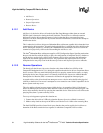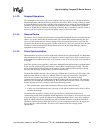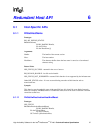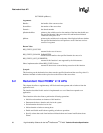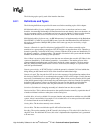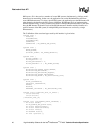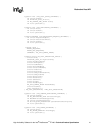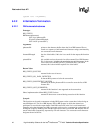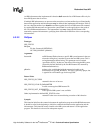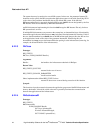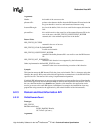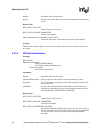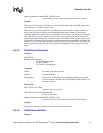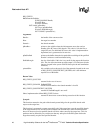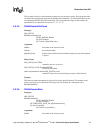
42 High Availability Software for the Intel
®
NetStructure
TM
ZT 4901 Technical Product Specification
Redundant Host API
typedef void * RH_HANDLE;
6.2.2 Initialization/Termination
6.2.2.1 RhEnumerateInstances
Prototype:
HSI_STATUS
RhEnumerateInstances(
OUT char *pInstanceID,
IN uint32 InstanceIDLength,
OUT uint32 *pActualSize );
Arguments:
pInstanceID - pointer to the character buffer where the list of RH Instance IDs are
stored as a sequence of null-terminated character strings, terminated by
two consecutive null characters
InstanceIDLength the size of the buffer; if this size is too small for the output, this function
fails.
pActualSize - this variable receives the actual size of the returned list of RH Instance
IDs, in characters, including the terminating two null characters. In the
case of the error code HSI_STATUS_INSUFFICIENT_BUFFER
returned, this is the minimal required size of the buffer.
Return Value:
HSI_STATUS_SUCCESS
returned in the case of success
HSI_STATUS_NO_ DATA_DETECTED
no known RH systems exist for the current host
HSI_STATUS_INSUFFICIENT_BUFFER
returned if the buffer pInstanceID is too small to store the list of RH
Instance IDs
HSI_STATUS_NOT_SUPPORTED
returned if this function is not supported on the current host
Other, implementation-defined HSI_STATUS values
returned if other errors occurred during execution of this function
Synopsis:
This function can be used to enumerate existing RH Systems on the current host, before doing an
actual RhOpen call. The list of RH Instance IDs for RH Systems in which the current host
participates is stored in the output buffer. Each RH instance ID in the list is a null-terminated
character string that designates one RH system and can be used as a parameter in a subsequent call
to RhOpen to specify the RH system that the application wants to work with. RH Instance IDs are
stored in the buffer sequentially, separated by one null character. Two consecutive null characters
designate the end of the list.



